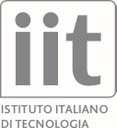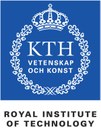|

Rheinische Friedrichs-Wilhelms-Universität Bonn, Germany
(Coordinator)
|
Autonomous Intelligent Systems Group (AIS)
The University of Bonn (UBO) is one of the leading public research universities of Germany. Founded in 1818, the University of Bonn offers a large number of undergraduate and graduate programs in a range of subjects. The University of Bonn has 520 professors and about 31,000 students. The Computer Science Institute has 20 professors, about 130 researchers, and about 25 non-scientific staff members. The institute has a long tradition in robotics research, especially in the areas of probabilistic robotics and service robots. The proposed research will be carried out in the Autonomous Intelligent Systems Group headed by Prof. Sven Behnke. The group conducts research in the areas of cognitive robotics and computational intelligence.
|
|
 Italian Institute of Technology (IIT), Italy Italian Institute of Technology (IIT), Italy
|
Department of Advanced Robotics
The Italian Institute of Technology, IIT, is a Research Foundation
established in 2006 to promote scientific excellence in “Humanoid” technology. The Institute currently has over 1000 researchers with over 85 working exclusively in robotics within the Dept. of Advanced Robotics. Research activities concentrate on an innovative, multidisciplinary approach to robotic design, and control, and the development of novel robotic components and technologies. There are four core areas; Humanoid Technologies (mechanism design, actuation and sensing, compliant systems, locomotion, control, physical Human-Robot Interaction, learning by imitation, reinforcement learning, and end-effectors, humanoids developed at IIT include iCub and COMAN), Biomimetic Technologies (high performance quadrupedal robots (HyQ) focusing on motion planning, gait generation and control, and power actuation), Biomedical Technologies and Haptic/VR technologies. The Advanced Robotics Dept. is currently involved or participated in the past in a number of EU projects including VIACTORS, AMARSI, OCTOPUS, HandDVi, AUTONRECON, SAPHARI, PANDORA, STIFF-FLOP, RALP, ACTIVE and WEARHAP
|
|
 Scuola Superiore Sant'Anna (SSSA), Italy Scuola Superiore Sant'Anna (SSSA), Italy
|
Perceptual Robotics Laboratory (PERCRO)
SSSA is a public institution for the universitary education whose aims are those of promoting and enhancing the scientific culture. PERCRO (Perceptual Robotics) is a research laboratory of Scuola Superiore Sant’Anna. More than 40 researchers are now working in the lab; their expertise varies amongst mechanical design, control, electronics, computer science, 3D graphics system, software applications, human factors, interaction design and project management. PERCRO Lab is actively engaged on research and education on Virtual Environments, Teleoperation and Robotic design for the human machine interaction, performing research activities on simulators, modeling and control of robots and haptic interfaces, telemedicine, virtual prototyping and cultural heritage.
|
|

KTH Royal Institute of Technology, Sweden
|
Computer Vision and Active Perception Lab (CVAP)
KTH is the leading technical university in Sweden with research in a broad range of topics ranging from natural sciences to all branches of technology. The School of Computer Science and Communication, with about 60 senior faculty, performs research in areas such as applied mathematics, distributed computing, and computational neuroscience. Its Computational Vision and Active Perception Laboratory (CVAP), performing research in computational vision and robotics, was formed in 1982. CVAP has support from the Swedish Foundation for Strategic Research, the Swedish Research Council and a number of EU projects for a total of around e 2 million in annual external funding. CVAP is integrated with the Centre for Autonomous Systems (CAS), an interdisciplinary centre for research on robotics with a focus on different aspects of service robotics.
|
|
 Linköping University, Sweden Linköping University, Sweden
|
Computer Vision Laboratory (CVL)
The Department of Electrical Engineering (ISY) at Linköping University, Sweden, was founded in 1972. It consists of seven divisions and in total 182 employees of which 52 are faculty members (PhDs), including 14 full professors. Approximately 70 postgraduate students are enrolled in the department’s PhD program, most of them holding salaried positions. The Computer Vision Laboratory (CVL) at the Department of Electrical Engineering (ISY) is headed by Professor Michael Felsberg and consists of 17 researchers, teachers, and PhD students and is well known for its research, also outside of Sweden: structure tensors, resolution pyramids, and steerable filters have been proposed here before their international breakthrough. CVL focuses on learning of complex image analysis, robot vision, and cognitive system architectures.
|
|

RWTH Aachen University, Germany
|
Institute for Man-Machine Interaction (MMI)
RWTH Aachen University, established in 1870, is divided into 9 faculties. Approximately 35,831 students are enrolled in 126 courses of study. The number of foreign students (5,000) substantiates the university’s international orientation. Every year about 5,000 graduates and doctoral graduates leave the university. Approximately 480 professors as well as 4492 academic and 2346 non-academic colleagues work at RWTH. The university budget amounts to 748 million Euros of which about 314 million Euros are thirdparty expenditures. Moreover, special fields of research, 20 graduate colleges, among them 9 founded by the German Research Foundation, 16 affiliated institutes with strong industrial alignment illustrate the university’s considerable research potential. The Institute for Man-Machine Interaction (MMI) belongs to the Faculty of Electrical Engineering and Information Technology and was founded in 2006 by its head Professor Dr.-Ing. Jürgen Rossmann.
|
|
 progenoX GmbH, Germany progenoX GmbH, Germany
|
progenoX GmbH
progenoX GmbH (PGX) is a provider of systems, solutions and services for rescue and other blue light forces with specialization on fire fighters. PGX evolves market-ready systems and solutions out of the results of R&D projects and technology transfers. The product and service portfolio consists of solutions from the fields of robotics, localization and navigation, logistics, communication, training and simulation. The efficient transfer from research into application is based on professional competence in the fields of project- and process management, transfer of technology, production management, configuration management, testing, qualification, integrated logistical support and product life cycle management, as well as a strong network of local technology partners.
|
|
 Kerntechnische Hilfsdienst GmbH, Germany Kerntechnische Hilfsdienst GmbH, Germany
|
Kerntechnische Hilfsdienst GmbH
KHG is the German Nuclear Emergency Response Organization. It founded in 1977 by the companies operating nuclear power plants in Germany, together with the fuel cycle industry and major research centres. These companies have to take by law technical and personnel precautions to stabilize a plant following an accident or breakdown, to analyse the cause and to eliminate the resultant effects. Part of this emergency programme has been placed in the hands of KHG. KHG has 23 persons permanent staff members and is mainly divided into four sections: infrastructure, radiation measurement, decontamination, and emote handling. The main areas of responsibility of KHG are:
• radiation measurements inside and outside of nuclear facilities,
• radiation protection monitoring of personnel, especially operational staff,
• recovering of radioactive material, as well as inspection and work at locations with maximum local dose rates, using remote-controlled manipulator vehicles,
• decontamination of personnel, equipment and enclosed areas,
• filtering waste air with mobile equipment,
• collection of low-level radioactive waste water, and
• equipping operational personnel with protective clothing and respiratory devices.
|


 Italian Institute of Technology (IIT)
Italian Institute of Technology (IIT) Scuola Superiore Sant'Anna
Scuola Superiore Sant'Anna
 Linköping University
Linköping University
 progenoX GmbH
progenoX GmbH Kerntechnische Hilfsdienst GmbH
Kerntechnische Hilfsdienst GmbH